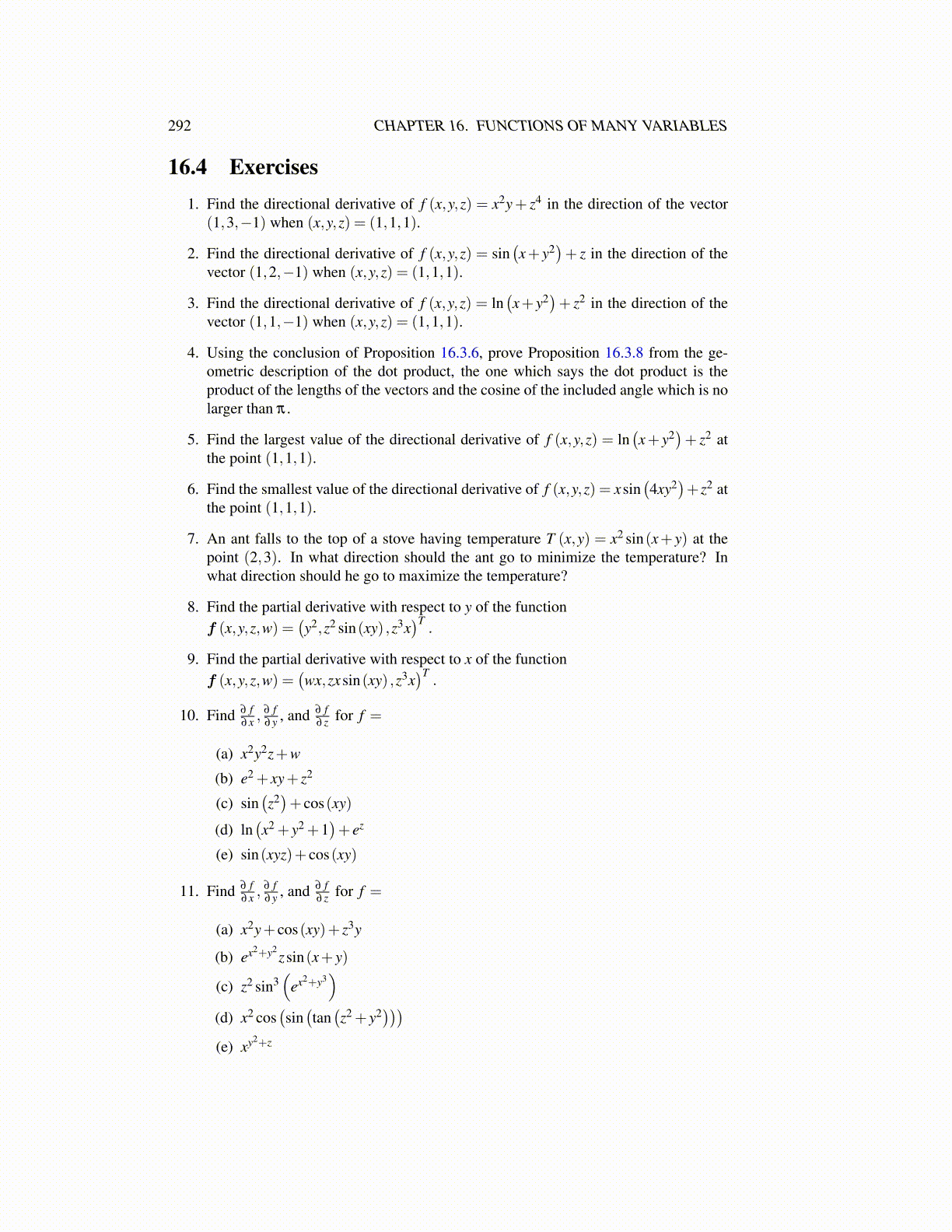
292 CHAPTER 16. FUNCTIONS OF MANY VARIABLES
16.4 Exercises1. Find the directional derivative of f (x,y,z) = x2y+ z4 in the direction of the vector
(1,3,−1) when (x,y,z) = (1,1,1).
2. Find the directional derivative of f (x,y,z) = sin(x+ y2
)+ z in the direction of the
vector (1,2,−1) when (x,y,z) = (1,1,1).
3. Find the directional derivative of f (x,y,z) = ln(x+ y2
)+ z2 in the direction of the
vector (1,1,−1) when (x,y,z) = (1,1,1).
4. Using the conclusion of Proposition 16.3.6, prove Proposition 16.3.8 from the ge-ometric description of the dot product, the one which says the dot product is theproduct of the lengths of the vectors and the cosine of the included angle which is nolarger than π .
5. Find the largest value of the directional derivative of f (x,y,z) = ln(x+ y2
)+ z2 at
the point (1,1,1).
6. Find the smallest value of the directional derivative of f (x,y,z) = xsin(4xy2
)+ z2 at
the point (1,1,1).
7. An ant falls to the top of a stove having temperature T (x,y) = x2 sin(x+ y) at thepoint (2,3). In what direction should the ant go to minimize the temperature? Inwhat direction should he go to maximize the temperature?
8. Find the partial derivative with respect to y of the functionf (x,y,z,w) =
(y2,z2 sin(xy) ,z3x
)T.
9. Find the partial derivative with respect to x of the functionf (x,y,z,w) =
(wx,zxsin(xy) ,z3x
)T.
10. Find ∂ f∂x ,
∂ f∂y , and ∂ f
∂ z for f =
(a) x2y2z+w
(b) e2 + xy+ z2
(c) sin(z2)+ cos(xy)
(d) ln(x2 + y2 +1
)+ ez
(e) sin(xyz)+ cos(xy)
11. Find ∂ f∂x ,
∂ f∂y , and ∂ f
∂ z for f =
(a) x2y+ cos(xy)+ z3y
(b) ex2+y2zsin(x+ y)
(c) z2 sin3(
ex2+y3)
(d) x2 cos(sin(tan(z2 + y2
)))(e) xy2+z